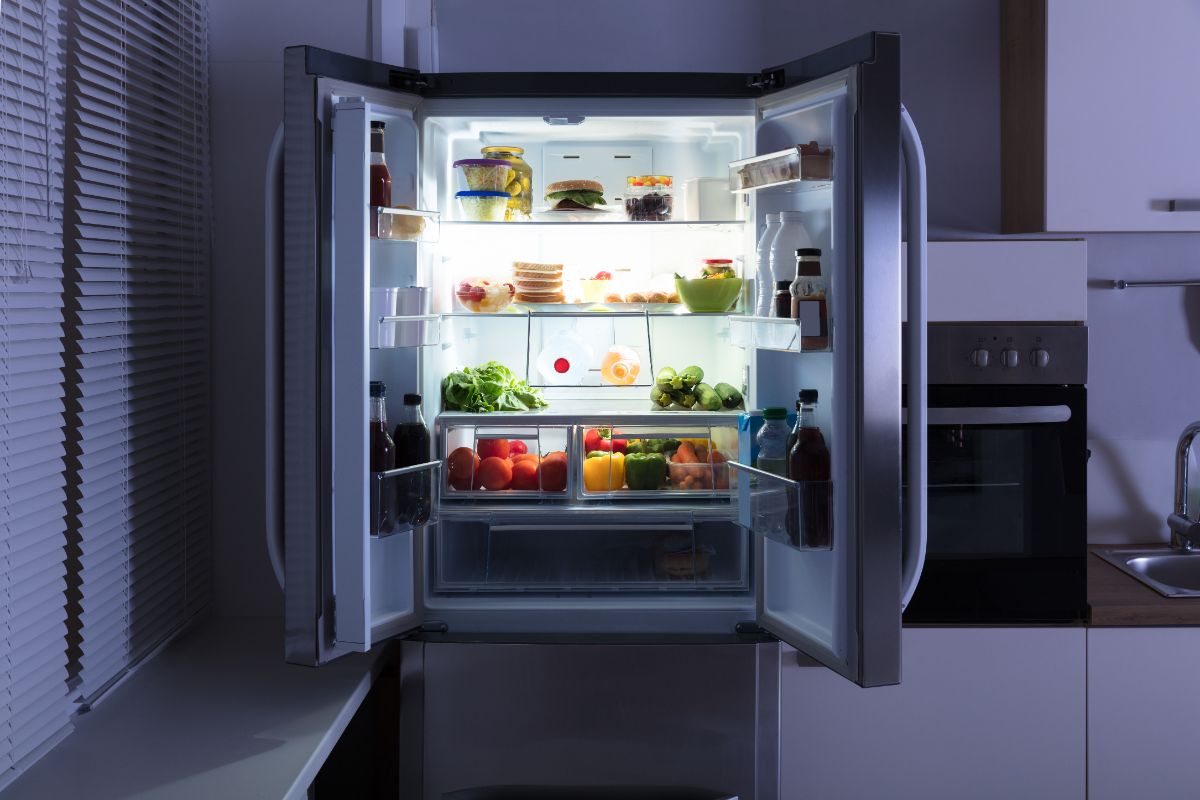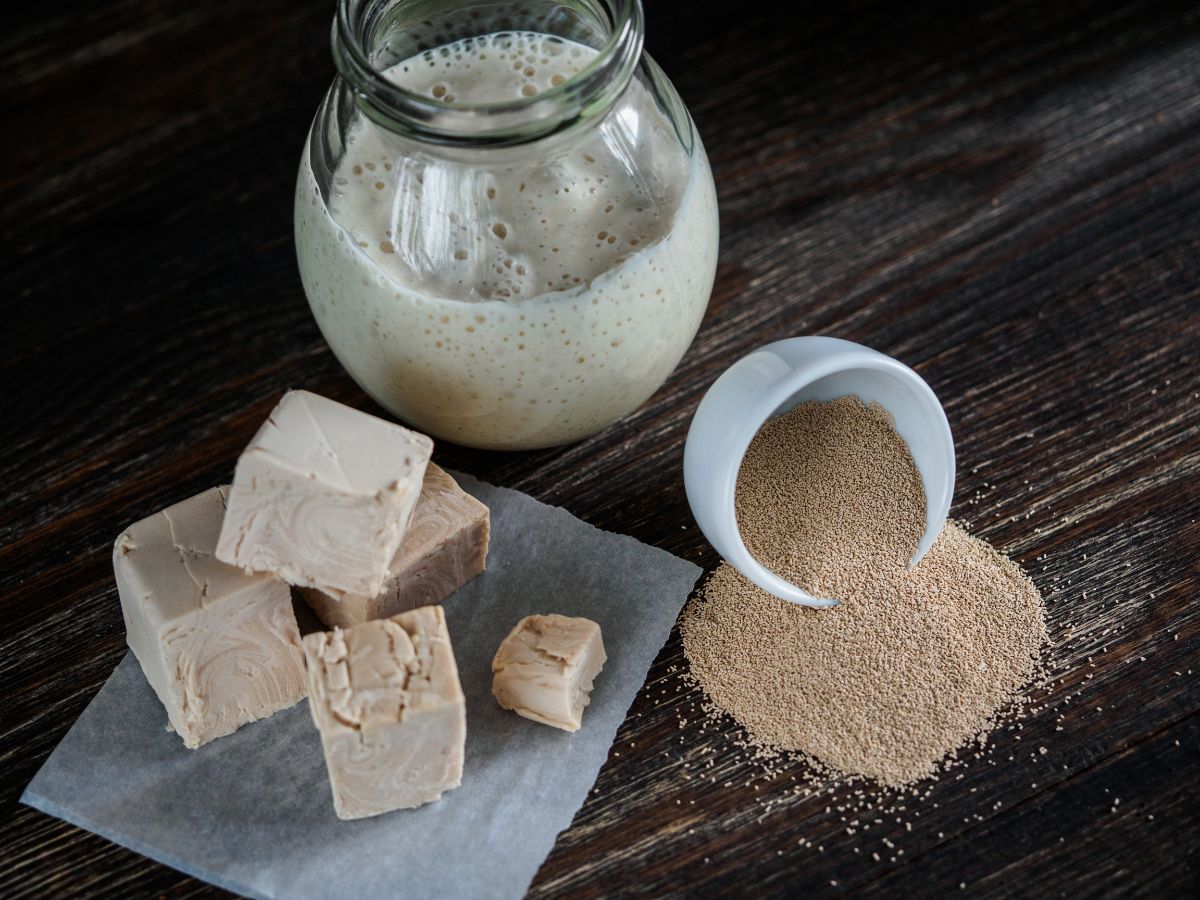If you have started to make a batch of bread and discover you do not have the time to complete the rising and baking process, you can put the dough in the refrigerator and finish at a later time. The yeast-bread dough can be refrigerated. Once the dough has risen once, and you’ve kneaded it down, oil the top of the dough slightly, cover it with plastic wrap, or place it in a ziplock bag. You can then place the dough in the refrigerator before it has the chance to rise a second time.

The yeast will continue to work in your dough, but at a very slow pace. This process will give you a couple of hours or more to attend to other matters until you can return to your bread baking.
The first few hours in the refrigerator, you may have to punch the dough down a time or two, as there may be enough warmth left to allow it to rise, but once it is completely cool, you should only have to check it every twelve hours or so to see if it needs to be punched down again.
Anytime during this process should the dough double in size, you should punch it down. You can allow this dough to sit in your refrigerator for up to four days.
When you are ready to complete the baking process, punch the dough down, reshape it into a loaf if necessary, and let it rise one more time. This last rise will be slower than usual as the dough has to reach room temperature. You can bake the loaf as per normal instructions once it has fully risen.
Punching down dough – This phrase may sometimes confuse bakers as it suggests an aggressive action. When ‘punching down’ dough, you complete the process gently and without force. A clenched fist is used, which is how this process may have gotten its name, but the deflation of the dough is best done with a gentle action.
How Long Can I Keep Yeast in the Refrigerator?
Yeast becomes very perishable once it has been exposed to heat, moisture, or air. If you have an opened package or jar, it must be placed in the refrigerator or freezer in an airtight container.
If you are storing the opened yeast in the refrigerator, it can remain there for about four months, if you are freezing the yeast, it can stay frozen for about six months. It may remain active after this time, but you will have to be sure and ‘proof’ it before using it in your dough.
Proofing your yeast- Proofing or preparing your yeast for dough ensures the yeast is still active and will allow your dough to rise. To proof your yeast, you will dissolve one package along with a teaspoon of sugar in warm water. Allow this mixture to stand for five to ten minutes. If the mixture begins to foam, you know the yeast is still active and ready to use. If it does not create a foam, you will need to throw this yeast away and purchase new yeast.
How Long Can I Keep Yeast in Package?
Each package or jar of yeast has a ‘best if used by’ date on it. Generally, it is two years from the time the company packaged it. You will find a month and year stamped on the package, which is how long you have to use the product. If the packaging is unopened, you should store the container in a dry, cool place like a cupboard. Unopened packages may also be stored in the refrigerator or freezer.

When you are ready to use the yeast, it should be at room temperature. If you have been storing your yeast in the freezer or refrigerator, take out as much as your recipe calls for and allow it to sit for approximately 45 minutes to allow it to reach room temp.
Yeast is a living organism. It will lose its activity over time even if you have not opened the package.
These are tips on how to store your opened packages of dry yeast by freezing or refrigerating:
- Fold the package down, allowing any extra air to escape, to the level of the yeast
- With a small clip or a piece of tape secure, the package is closed before placing into storage
- Label your package with the ‘best if used by’ date and make a note of the date you are putting it into storage
How Can I Tell if the Yeast is Bad?
Yeast is a dry ingredient, and like other dry ingredients, it will clump together and form a solid chunk when it has gotten too old. It may also display signs of organic growth if it has remained unused for an extended time. If you have fresh yeast, you will notice discoloration, signs of mold, or that it has dried out if it has gotten too old.
If any of these signs are noticed, you should discard the package immediately. With yeast, it may be hard to tell if it has gotten too old to use as it will continue to look and smell normal long after it is no longer useable. For this reason, proofing your yeast is always recommended to make sure the yeast is active and usable.
Can I Substitute Yeast if it Has Gone Bad?
The best option, of course, is to replace your bad yeast with a fresh new package. There are times; however, when you are in the middle of the baking process, and you just don’t have the time to run to the store.
There is a substitution you can try to finish your recipe:
Baking Soda
One option for substituting your yeast is to use equal amounts of baking soda and an acid such as vinegar, buttermilk, or lemon juice to come up with the same amount of yeast your recipe needs.
For example, if you need one tablespoon of yeast, replace it with a half tablespoon of baking soda and half a tablespoon of the acid. When the acid ingredient comes into contact with the baking soda, you will get a chemical reaction that will produce the carbon dioxide needed to make the dough rise.
You will have to add the baking soda and acid after all other ingredients have been put in, and get your baked good into the oven as soon as you’ve put the baking soda and acid into the mix.
Baking Powder
The second option is to replace your bad yeast with an equal amount of baking powder. Baking powder has baking soda and cream of tartar in it, so it has what it needs to make your dough rise.
Add the baking powder with the rest of the ingredients, and when it comes into contact with any liquid in your mixture, it will start to bubble and make your dough rise.
The baking powder will cause two rises, once when you add it to your dough, and again when it is baked in the oven. With the baking powder, you do not have to wait until the end to add it to the dough; you can mix it with other dry ingredients and continue with your recipe.
If your recipe already has either baking soda or baking powder in it, your substitute would be additional to those amounts and equal to the yeast amount needed per the recipe. Note, these are only suggestions if you find yourself in a bind. To achieve the best results with your bread, you should use yeast.
